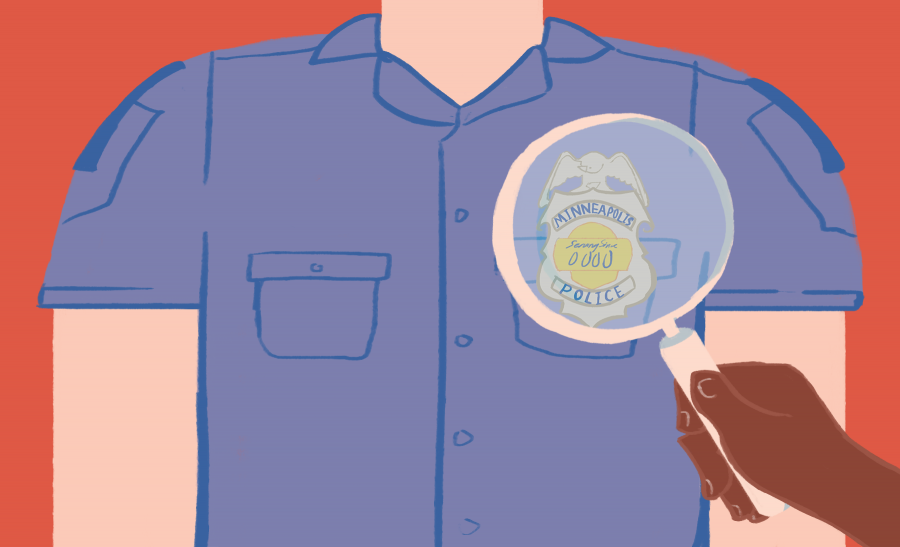The police killing of George Floyd in May sparked a pivotal movement in Minneapolis to address long-standing issues on racial disparities and policing. Throughout history, the similarities of racial injustice between the University of Minnesota and Minnesota set barriers for marginalized communities.
In the past month, University officials and state lawmakers have begun rethinking policies for improved public safety and policing accountability. Many community members said the journey to rebuild and heal still has more action steps needed in order to create reparations for racial injustice.
Racial disparities ‘not some kind of accident’
After the race riots in the 1960s, President Lyndon Johnson formed the Kerner Commission, a group that studied why the riots happened and researched how they could be prevented in the future. The Kerner Report found racial disparities in Black communities are a major factor in riots.
“These frustrations are reflected in alienation and hostility toward the institutions of law and government and the white society which controls them,” the report said.
Clear racial disparities have been prevalent across Minneapolis for over a century. The “Minnesota paradox,” a term coined by University professor Samuel L. Myers Jr., defines the Twin Cities as some of the best cities to live in yet one of the states with the worst racial disparities in the nation.
Now “Minnesota paradox” is a common term to describe Minnesota as the state continues to attract international attention and the Minnesota Human Rights Department investigates the Minneapolis Police Department to determine if police have engaged in discriminatory practices.
A project called Mapping Prejudice has visualized racial covenants in order to track the history of homeownership in Minnesota. Racial covenants were a practice that allowed exclusively white people to buy or reserve land.
Racial covenants were introduced to Minneapolis in 1910. By the 1940s, racial covenants covered large areas of Minneapolis. In the late 1960s, it became explicitly illegal to use racial covenants due to the Fair Housing Act.
“By making it legally impossible for people who are not white to own property in most of the city, that sets us up for our racial wealth gap that we have today because owning property in the United States is the primary way that Americans amass wealth,” said Kirsten Delegard, co-director of Mapping Prejudice.
In Minneapolis, these restrictions created powerful obstacles and limited access to community resources for people of color. After the practice ended, Twin Cities residents are still experiencing inequities in the present, even 40 years later.
“The fact that the racial disparities that we have in the Twin Cities and Minnesota today were deliberately created through these explicit practices — it’s not some kind of accident that these things happen,” said Delegard.
MPD 150, a community effort by local organizers, researchers, artists and activists, examined 150 years of conduct by the Minneapolis Police Department and published its findings in 2017. The report, titled “Enough is Enough,” focuses on the history, present and future of policing in Minneapolis, including the alternatives of public safety.
“We are talking about restorative justice models and looking towards a future where Minneapolis isn’t looked at as a progressive city while having one of the highest housing racial disparities in America,” MPD 150 member Nikki Fleck said in an email to the Minnesota Daily.
While the group focuses on abolition of the police, Fleck added “… we know that the threads of white supremacy run through many, if not all major institutions in our society. When we tug at one hard enough the whole will begin to unravel.”
A change in University and city policing
After the death of George Floyd, nationwide demonstrations sparked conversations and debate over implementing changes in policing. On May 27, University president Joan Gabel sent a campuswide email to announce that the University would cut major ties with the Minneapolis Police Department. In a similar effort, the Minneapolis City Council approved plans to initiate a “new model” of community safety on June 12, after a majority of council members pledged to dismantle the Minneapolis Police Department.
“These bureaucratic barriers working together don’t allow for any kind of real immediate change for what the community calls for,” said Nadia Shaarawi, president of StudioU and member of Students for a Democratic Society. “That replicates itself on campus times ten.”
University student organizers continue to push demands for accountability and better public safety while amplifying student voices. In mid-June, Students for a Democratic Society, the Minnesota Student Association and other student organizations presented proposals to the Senate Consultative Committee about implementing changes to the University’s police department.
In the 1960s, Black people marched and protested against police brutality virtually alone, according to University political science professor August Nimtz. But now, demonstrations are happening across all 50 states and include more communities.
“That [first] march on May 26 was a rebirth of the progressive movement in the United States,” Nimtz said. “Progressive people had not been in the streets ever since the pandemic … and so what happened in Minnesota became an inspiration for others to do the same elsewhere.”
















